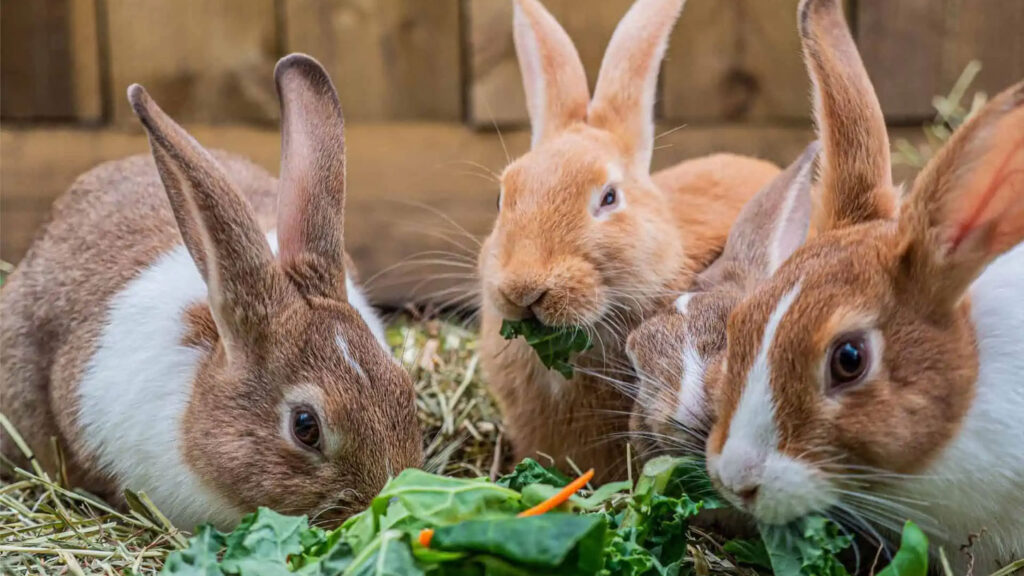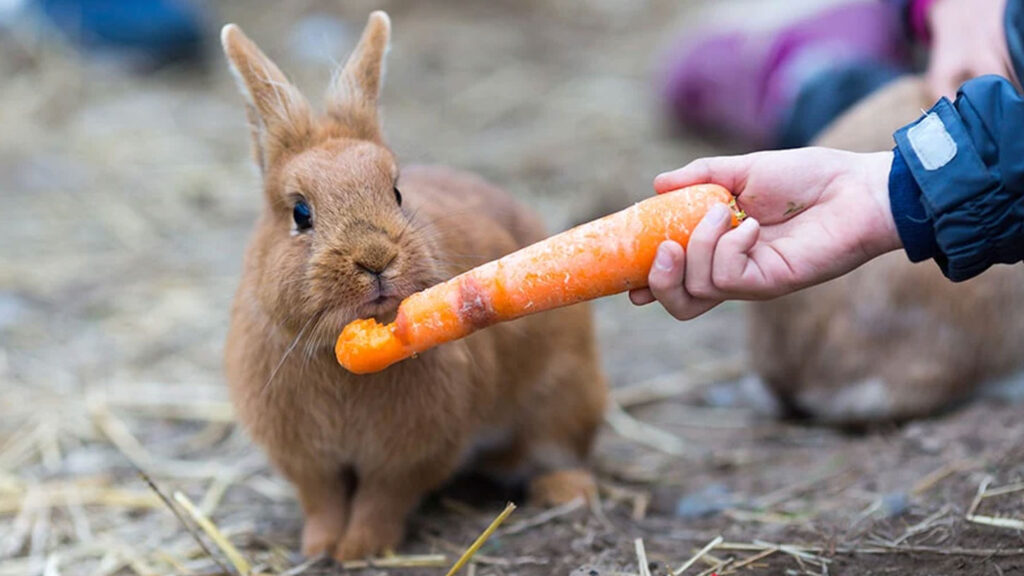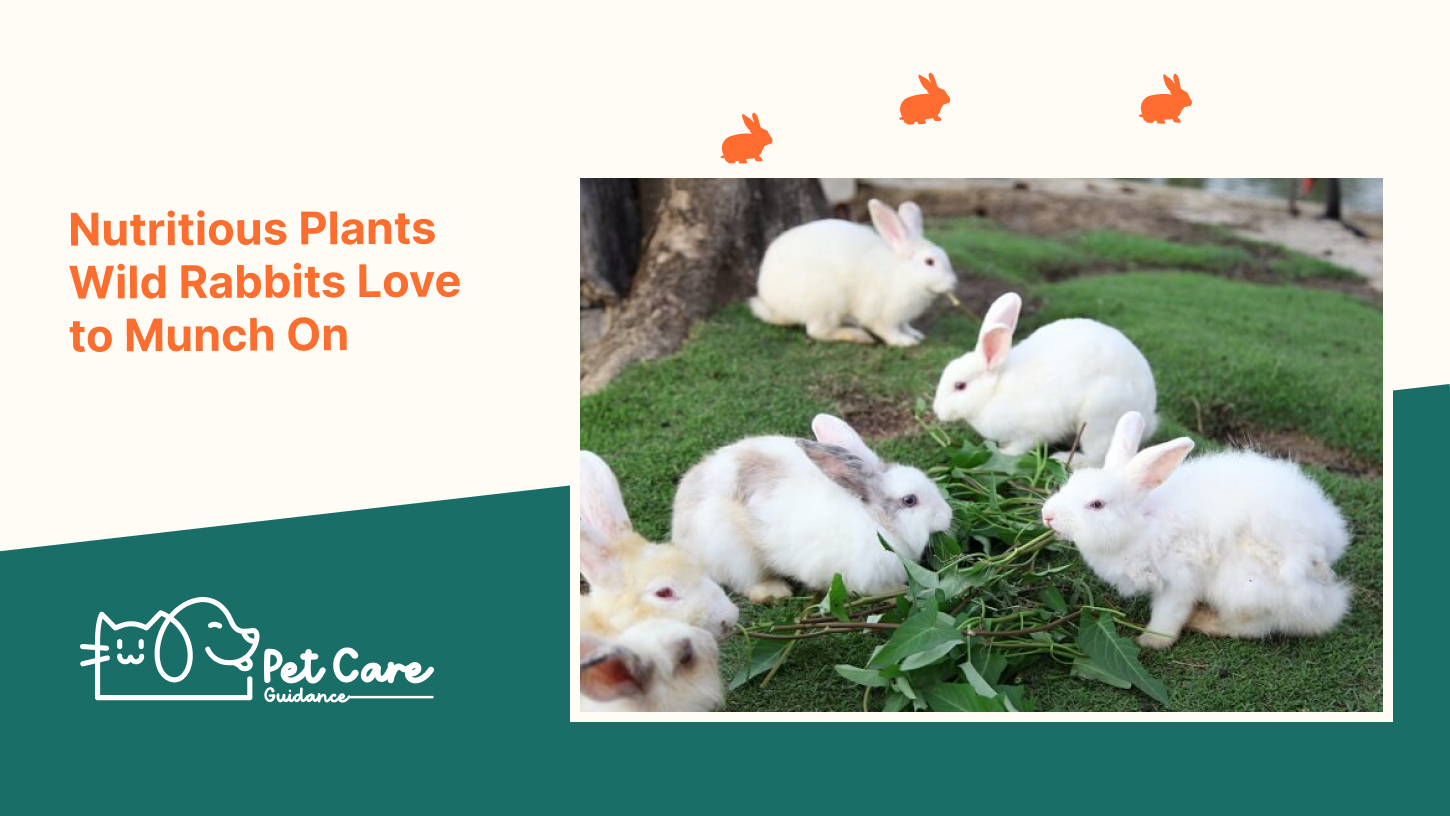Wild rabbits love to munch on nutritious plants like clover, dandelion greens, kale, oats, and rye grass. These plants offer delicious greens and provide essential nutrients for their diet.
Offering a diverse range of plants can satisfy their cravings and keep them healthy. Additionally, leaving patches of dandelions and clover in your yard and letting the grass grow longer can provide natural food sources for wild rabbits. Experimenting with different plants and observing their preferences can help you create a welcoming habitat for these adorable creatures.
Remember to put out treats like leftover herbs, strawberry or carrot tops, or trimmed ends of fruits and vegetables in small quantities as a special treat for them.
Why Is A Nutritious Diet Important For Wild Rabbits?
Nutritious plants are essential for wild rabbits to maintain optimal health. A balanced diet is crucial for their well-being, as it provides them with the necessary vitamins and minerals they need to thrive. A well-nourished rabbit is more likely to adapt and survive in the wild.
During the warmer seasons, wild rabbits primarily eat weeds, grasses, clover, wildflowers, and flower and vegetable plants. However, when the weather turns cold, their diet shifts towards consuming twigs, buds, bark, conifer needles, and any remaining green plants.
If you want to attract wild rabbits to your garden, consider planting annual bedding plants such as Bachelor’s Button, Cockscomb, Cosmos, Gazania, Impatiens, Morning glory, Nasturtium, and Pansy. These plants are known to be favored by rabbits and can help create a feeding and nesting habitat for them.
While it may be tempting to provide treats for wild rabbits, it’s important to do so sparingly. Leftover herbs, strawberry or carrot tops, or the trimmed ends of fruits and vegetables can be safe for them to consume in small quantities. However, it’s best to avoid making it a daily habit as their diet should primarily consist of natural plants.
By promoting a nutritious diet for wild rabbits, we can contribute to their overall well-being and enable them to thrive in their natural habitat.

Nutritious Plants That Provide Essential Vitamins And Minerals
| Clover | Clover is a highly nutritious plant that wild rabbits love to munch on. It provides essential vitamins and minerals, such as vitamin C, calcium, and potassium. The tender leaves and flowers of clover are rich in nutrients and are a great source of hydration for rabbits. Including clover in their diet can help improve their overall health and well-being. |
| Dandelion Greens | Dandelion greens are another nutritious plant that wild rabbits enjoy eating. These greens are high in fiber, which aids in digestion, and are packed with vitamins A, C, and K. Dandelion greens also provide essential minerals like calcium and potassium. Including dandelion greens in their diet can help promote a healthy immune system and support their overall health. |
| Kale | Kale is a leafy green vegetable that is rich in nutrients and is well-loved by wild rabbits. It is an excellent source of vitamins A, C, and K, as well as minerals like calcium and potassium. Kale is also high in fiber, which aids in digestion and promotes better gut health. Including kale in their diet can provide rabbits with essential nutrients for their overall well-being. |
| Oats | Oats are a nutritious and delicious treat for wild rabbits. They are a good source of fiber, protein, and essential minerals like manganese and phosphorus. Oats can provide rabbits with energy and help maintain their digestive health. Offering oats as a snack or treat can be a great way to supplement their diet and provide them with a tasty treat. |
| Rye Grass | Rye grass is a popular choice for wild rabbits due to its high nutritional value. It is rich in vitamins, minerals, and antioxidants, which can support their immune system and overall health. Rye grass also provides a good source of fiber, promoting optimal digestion. Including rye grass in their diet can ensure wild rabbits get the necessary nutrients to thrive in their natural habitat. |
Plants That Attract And Sustain Wild Rabbits
| Plants that Attract and Sustain Wild Rabbits |
|---|
| Bachelor’s Button (Centaurea cyanus) |
| Cockscomb (Celosia argenta cristata) |
| Cosmos (Cosmos bipinnatus) |
| Gazania (Gazania rigens) |
| Impatiens (Impatiens walleriana) |
| Morning Glory (Ipomoea purpurea) |
| Nasturtium (Tropaeolum) |
| Pansy (Viola x wittrockiana) |
Wild rabbits are known to have a diverse palate, and there are several plants that they love to munch on. These plants not only attract rabbits but also provide them with sustenance. Some of the nutritious plants that wild rabbits enjoy include Bachelor’s Button (Centaurea cyanus), Cockscomb (Celosia argenta cristata), Cosmos (Cosmos bipinnatus), Gazania (Gazania rigens), Impatiens (Impatiens walleriana), Morning Glory (Ipomoea purpurea), Nasturtium (Tropaeolum), and Pansy (Viola x wittrockiana).
These plants offer a variety of flavors and textures that rabbits find appealing. By planting these in your garden or providing them as a food source, you can attract and sustain wild rabbits while adding beauty to your surroundings.

Feeding Treats To Wild Rabbits – Do’S And Don’Ts
| Feeding Treats to Wild Rabbits – Do’s and Don’ts |
| Leftover herbs, strawberry or carrot tops, or the trimmed ends of fruits and vegetables are safe as treats for wild rabbits. Instead of throwing away these leftovers, you can put them outside for the rabbits to enjoy. However, it’s important to avoid making treats a daily habit for wild rabbits. |
Seasonal Diet Changes For Wild Rabbits
Keeping Wild Rabbits Out Of The Garden
Nutritious Plants Wild Rabbits Love to Munch On:
When it comes to keeping wild rabbits out of the garden, it’s important to understand their preferences. Rabbits prefer young, tender shoots and are particularly fond of lettuce, beans, and broccoli. They also have a tendency to nibble on flowers like gazanias, marigolds, pansies, and petunias. If you’re looking to attract wild rabbits away from your garden, planting these flowers may be a good idea.
However, if you want to protect your garden from rabbit damage, implementing rabbit deterrents can be effective. This can include placing fences around your garden, using natural repellents like garlic or peppermint, or introducing predator decoys. Taking these measures will help ensure wild rabbits don’t wreak havoc on your plants and flowers.
Frequently Asked Questions On Nutritious Plants Wild Rabbits Love To Munch On
What To Plant To Attract Wild Rabbits?
To attract wild rabbits, plant annual bedding plants like Bachelor’s Button, Cockscomb, Cosmos, Gazania, Impatiens, Morning glory, Nasturtium, and Pansy. These plants are favored by rabbits and provide them with nutritious food.
What Do Wild Rabbits Like For Treats?
Wild rabbits like treats such as leftover herbs, strawberry or carrot tops, and trimmed ends of fruits and vegetables. However, it’s important not to make this a daily habit.
What Wild Plants Do Wild Rabbits Eat?
Wild rabbits eat weeds, grasses, clover, wildflowers, flower and vegetable plants in warmer seasons. In colder weather, they munch on twigs, buds, bark, conifer needles, and any remaining green plants. They also enjoy lettuce, beans, broccoli, gazanias, marigolds, pansies, and petunias.
What Plants Do Rabbits Eat Most?
Rabbits mostly eat young shoots and are fond of lettuce, beans, and broccoli. They also enjoy nibbling on flowers like gazanias, marigolds, pansies, and petunias.
Conclusion
There are many nutritious plants that wild rabbits love to munch on. Some popular choices include clover, dandelion greens, kale, oats, and rye grass. These plants provide rabbits with delicious greens and important nutrients. It’s important to offer a variety of plants and ensure there is always fresh water available for hydration.
By providing these natural food sources, you can create a thriving environment for wild rabbits in your backyard.


